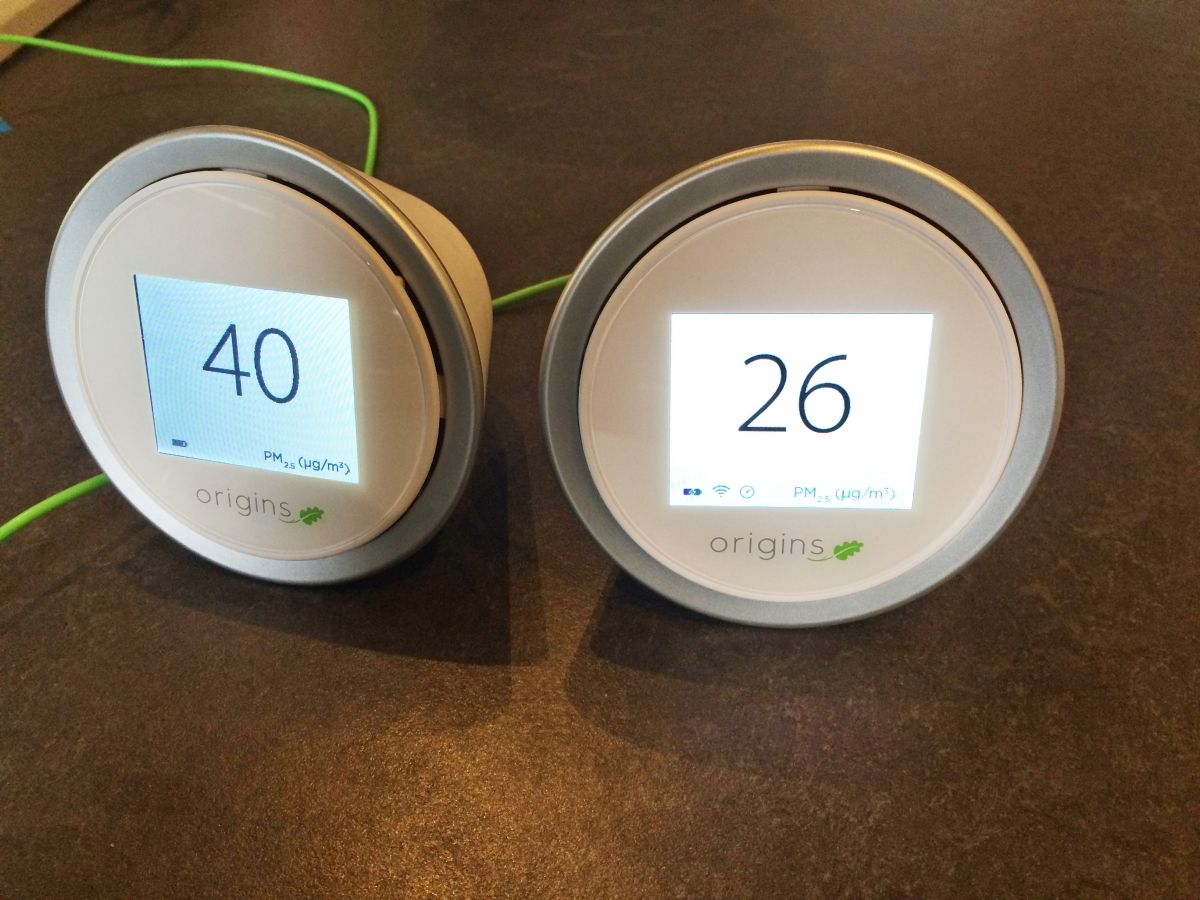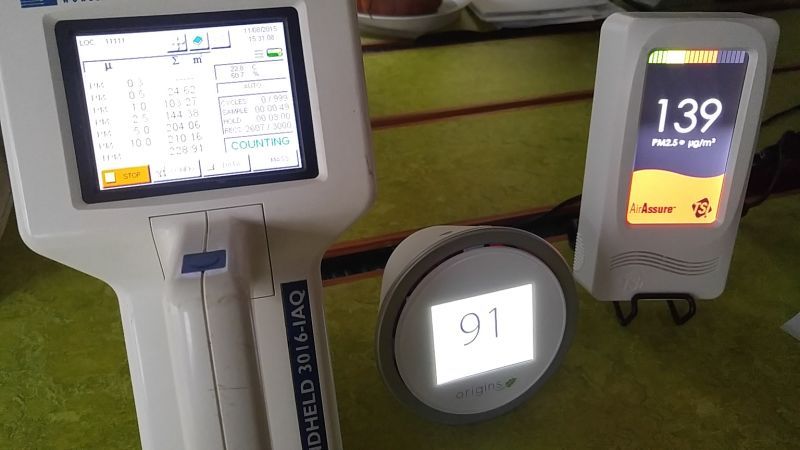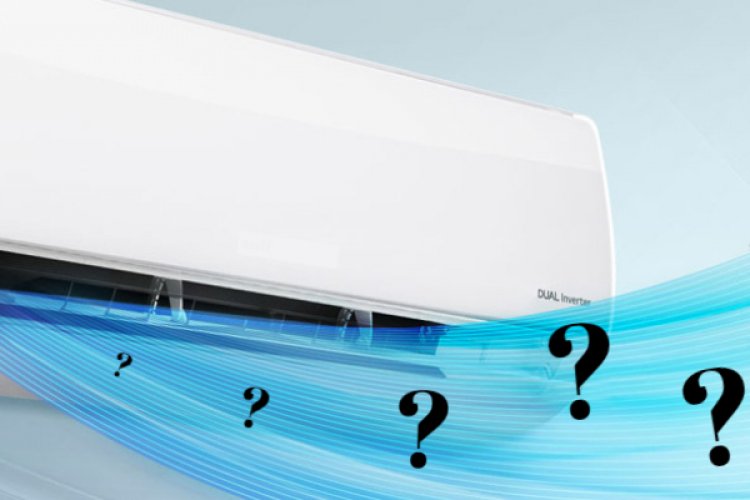Which Air Quality Monitor Should I Buy?
The Origins Laser Egg has helped kick off a massive interest in cosumer air testing equipment. One of the experts in this arena is GIGA, a Shanghai-based resource for healthy building standards including building materials and air quality monitoring. They recently posted this guide to air quality monitors, and we asked them for permission to republish it here for you. Read on!
Lately, it seems there isn’t a day that goes by without having someone ask which IAQ (Indoor Air Quality) monitor they should buy.
As with all good questions, the answer is “it depends”. It depends on what that someone needs: a consumer toy, a precision instrument or something in between?
Ten years ago it was simple: there was virtually only one option to choose from. Today, a new option appears every week. Here is a simplified version of what to look out for:
"The general rule of thumb is that if it can’t be recalibrated, don’t buy it."
Accuracy: “How accurate is it?” This is everyone’s first question … and usually their last. In the world of consumer monitors, the question is answered by having a sales person hold the monitor up next to an expensive scientific grade monitor and show that the readings are almost the same, for a fraction of the price. This isn’t a very difficult feat to accomplish. The key questions are: how accurate is the monitor over a given range, how quickly does it drift (decalibrate) and most importantly, can it be recalibrated?
Range: All monitors work best within a given range. For consumer monitors the range is typically quite narrow. Whereas accuracy may be within 20 percent at low levels of pollutants, the level of accuracy drops rapidly at higher levels. Many monitors also have a ceiling, meaning a limit beyond which they can no longer measure. For example, we have seen many monitors for particulate matter cap out at 50-65 µg/m3, when actual indoor readings are 2X or even 5X that. These monitors are dangerous seeing as the give a false sense of security.
Drift: All monitors drift or decalibrate over time. The question is how much and how fast? The better ones drift by 5-25 perfect within a year. The worst drift by the same amount within a week.
Calibration: Seeing as all monitors drift over time, the ability to recalibrate a monitor is critical. The general rule of thumb is that if it can’t be recalibrated, don’t buy it. Without recalibration it is destined to become a door-stop or paper-weight within a few weeks to a few months. The challenge is that recalibration is typically more expensive than the average consumer monitor. In other words, if you’re buying a consumer unit it will typically cost you less to throw it out and buy a new one after a few months. That’s irresponsible.
One last important consideration is quality control. Unfortunately, this is not a metric usually found in monitor specifications. Rather, it follows the ‘you get what you pay for’ rule of thumb. Even when similar hardware is used, the lower price-point of consumer monitors does not allow for extensive quality control. The result is that units can vary greatly from one to the other and/or moving parts such as internal fans can start to rattle or jam over time.
For these reasons (and more) RESET™ classifies IAQ monitors according to three tiers of performance:
- Grade A: Scientific
- Grade B: Building
- Grade C: Consumer
Previously, the market for IAQ monitors was almost exclusively Grade A. However, over the past 18 months the market has been flooded with Grade C monitors. We encourage people to stay away from consumer grade units given their tendency to give false readings after a few weeks to a few months. With a little more time and education what the bulk of the market will demand is Grade B monitors, providing the best ratio of cost for performance. Unfortunately there are still very few Grade B options on the market. Users are only just starting to learn the hard way (after spending money) that Grade C units don’t work over time.
If you’ve read this far you’re probably thinking, “This is great, but I still want to know which unit I should buy.” For now, this post has become long enough! Please read the next post to learn about brands we've reviewed.
Rather than go through the long list of now defunct monitors we’ve tested, I’ll simply focus on the best we’ve found within each class. For now, we’ll also only focus on PM2.5, which is less than ideal (more on that below) but will simplify the subject.

Grade C: Normally, we advise people to avoid this class of monitors. However, there is one Grade C unit that stands above the rest: the Laser Egg.
The Laser Egg is a PM2.5 monitor that has been getting a lot of attention as of late and rightly so. Not only is it surprisingly accurate – it is also able to measure particulates over an impressive range. The best way to describe it would be a Grade B sensor in a Grade C casing.
Despite the accuracy, the Laser Egg suffers from the same limitations as other consumer monitors: there is no way to physically recalibrate it. Although it is possible to adjust or ‘calibrate’ the readings for Shanghai or Beijing and the makers will soon allow users to customize the calibration via software, there is no way to clean or replace the particulate sensor once it gets dirty. Seeing as the function of the monitor is to measure ‘dirt’, the odds of it eventually getting dirty are practically absolute. Buyers should be wary of the fact that although it performs like a Grade B, it’s fate is that of a Grade C. A simple way to understand this is to imagine having an Audi engine in car that has no hood: you'd have no way to maintain it and the engine would eventually die. However, if you are committed to buying a consumer unit, this is the one to get.
The image above shows two units after several months of intensive use. Although they started with identical measurements, one of the units has drifted by ~30 percent, most likely because the internal lens is dirty.
Grade B: This class of monitors provides the long-term reliability and accuracy required by offices, schools, gyms, hotels, serious home users, etc., without the cost of Grade A. Over the course of the next 18 months we will see a significant increase in the number of brands that meet Building Grade standards. Until then options will remain slim. As of yet, the only unit having qualified is the TSI Air Assure. This unit performs almost as well as a Grade A at a fraction of the cost and sees little drift over time. Moreover, it is designed to be re-calibrated: sensors can be cleaned with a jet of pure air or replaced. That is an absolutely critical detail.
We are currently testing two other units which seem quite promising. Look for updates in this class within the next couple of weeks/months.
Grade A: This is the kingdom of the Particle Plus, Lighthouse and TSI Dust-trak. If you are a lab, clean-room or factory, these are the units for you. They are also the units most commonly used to benchmark the performance of Grade B and Grade C units on a regular basis. The internal sensors, pumps, fans, electronics, etc., are designed to provide greater accuracy, maximize measuring range, minimize drift, allow for recalibration and last longer. In short, you typically get what you pay for.

The image above shows typical readings from all three Grades after several months of purchase and several rounds of exposure tests. The Grade A reference unit displays PM2.5 at 144.38. The Grade B unit is 3.7 percent different with a reading of 139. The Grade C unit is 37 percent different with a reading of 91. The Grade B was recalibrated mid-way through but unfortunately the Grade C unit couldn’t be. All of them started with the same reading and trends.
The great news is that the IAQ Monitor market is maturing and now includes options for all budgets and needs. That wasn’t the case as little as 18 months ago. The caveat is that most buyers are not educated enough to tell the difference. Hopefully this post helps change that.
However, ‘the elephant in the room’ regarding this post is that looking at PM2.5 alone can be very dangerous to human health. In fact, PM2.5 should never be looked at without also considering CO2 and ideally TVOCs (chemical gasses) as well. The ideal monitor is a Grade B that tracks PM2.5, CO2 and TVOC. From what we’re seeing and testing in the market, we’re just weeks away from seeing them appear. Stay posted.
Photos courtesy of GIGA
Related stories :
Comments
New comments are displayed first.Comments
![]() admin
Submitted by Guest on Sat, 01/16/2016 - 09:33 Permalink
admin
Submitted by Guest on Sat, 01/16/2016 - 09:33 Permalink
Re: Which Air Quality Monitor Should I Buy?
thanks for the input, jaybeijinger
![]() pete
Submitted by Guest on Wed, 01/06/2016 - 13:39 Permalink
pete
Submitted by Guest on Wed, 01/06/2016 - 13:39 Permalink
Re: Which Air Quality Monitor Should I Buy?
Thanks for the clarification, Liam!
I still love the LaserEgg! 

Carlos
Validate your mobile phone number to post comments.







